Springfield, MO Pollen and Allergy Report for Summer 2023
Pollen Allergy Trends in Springfield, MO
When is pollen lowest in Springfield, MO?

February
Lowest month total PPM
Avg. PPM
When is pollen highest in Springfield, MO?

April
Highest month total PPM
Avg. PPM
How does pollen in Springfield, MO compare to Missouri?
Springfield has a higher average PPM than the state of Missouri.
Springfield yearly avg PPM:
Missouri yearly avg PPM:
How does pollen in Springfield, MO compare to the USA?
Springfield has a higher average PPM than the USA.
Springfield yearly avg PPM:
USA yearly avg PPM:
Is pollen worse this year in Springfield, MO?
Spring 2023 was worse than spring 2022.
Spring 2023 PPM:
Spring 2022 PPM:
Average PPM in Springfield, MO
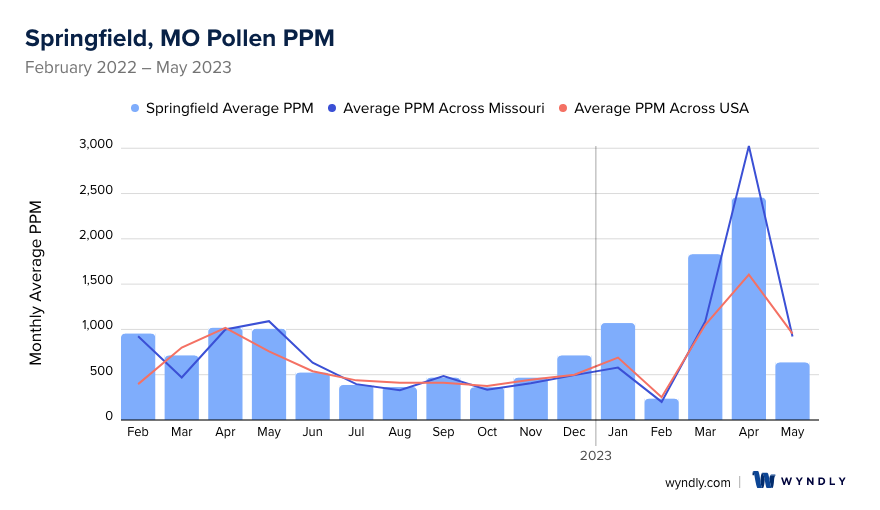
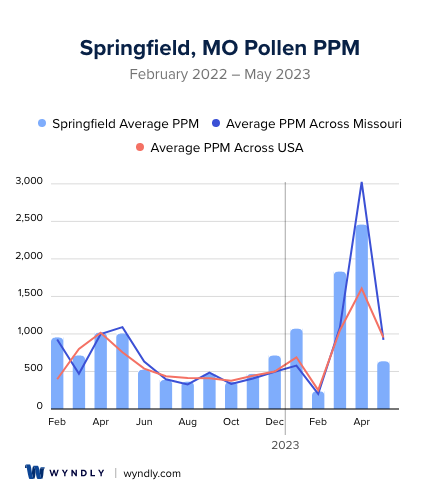
Springfield, MO Pollen and Allergy Breakdown by Month
Grass
When is grass pollen highest in Springfield, MO?
February has the highest grass pollen in Springfield, MO with an average PPM of
When is grass pollen lowest in Springfield, MO?
December has the lowest grass pollen in Springfield, MO with an average PPM of
Tree
When is tree pollen highest in Springfield, MO?
April has the highest tree pollen in Springfield, MO with an average PPM of
When is tree pollen lowest in Springfield, MO?
September has the lowest tree pollen in Springfield, MO with an average PPM of
Weed
When is weed pollen highest in Springfield, MO?
April has the highest weed pollen in Springfield, MO with an average PPM of
When is weed pollen lowest in Springfield, MO?
February has the lowest weed pollen in Springfield, MO with an average PPM of
Springfield, MO Pollen Monthly Breakdown by Pollen Type
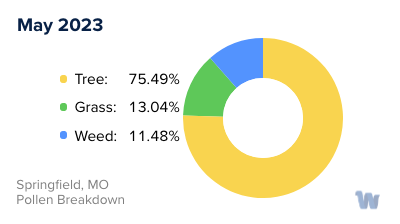
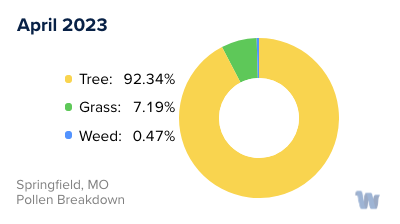
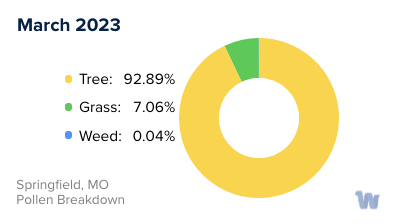
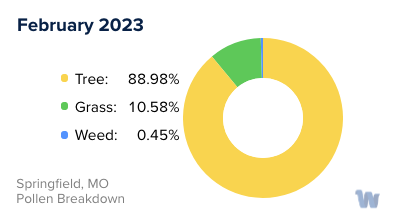
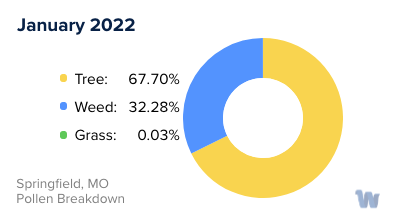
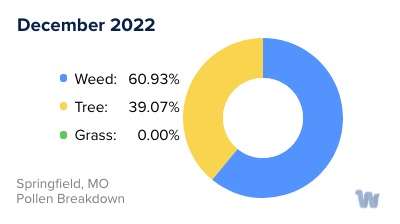
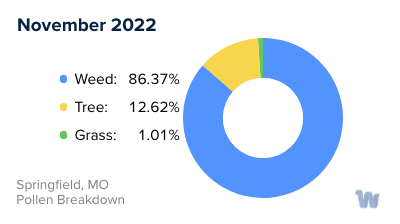
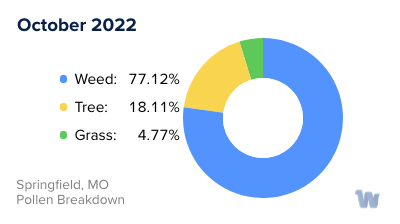
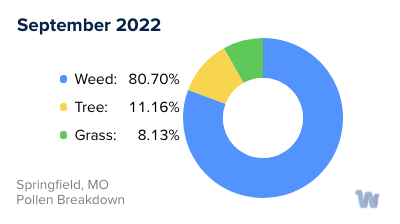
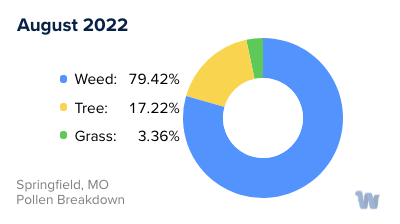
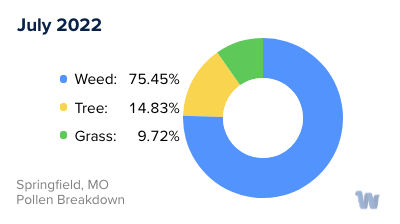
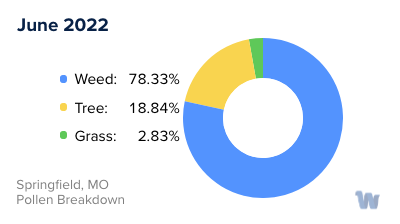
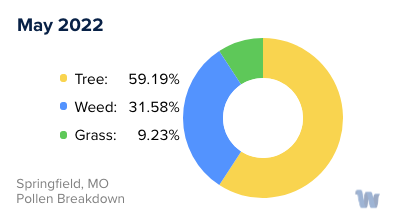
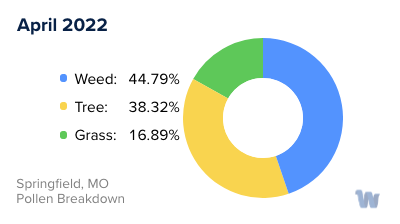
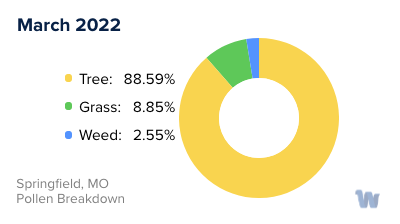
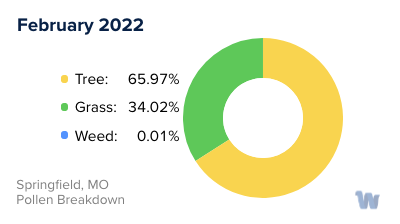
Pollen and Hay Fever in Springfield, MO
Pollen allergies, often referred to as hay fever, are a common health concern for residents of Springfield, Missouri. This condition, medically known as allergic rhinitis, can significantly impact the quality of life for those affected, especially during the peak pollen seasons.
Springfield is nestled in an area abundant with a variety of plant life, each contributing to the pollen count at different times of the year. The major players in this botanical ensemble include trees, grasses, and weeds, each releasing their pollen at distinct periods, thus extending the allergy season for many individuals.
The spring season in Springfield ushers in the tree pollen season, where oak, cedar, maple, and pine trees are the key contributors. As these trees begin to bloom, they release tiny pollen grains into the air, which can trigger allergic reactions in susceptible individuals. This can cause symptoms like itchy eyes, runny nose, and sneezing.
As we transition into the summer months, grass pollen takes center stage. Bermuda grass, ryegrass, and Kentucky bluegrass are among the common grasses in Springfield that cause hay fever. The microscopic pollen grains from these grasses can travel for miles, making it difficult for individuals with allergies to avoid exposure.
Lastly, as the end of summer blends into fall, weed pollen begins to proliferate. Ragweed, sagebrush, and lamb's quarters are the usual culprits in Springfield. These hardy weeds, particularly ragweed, can produce a significant amount of pollen, causing the allergy season to extend well into autumn.
While Springfield's rich diversity of plant life makes it a beautiful place to live, it does present challenges for those with pollen allergies. Understanding the types of pollen and their respective seasons can help individuals anticipate and manage their symptoms better, improving their quality of life during these pollen-heavy times.

